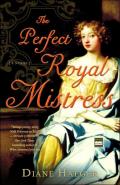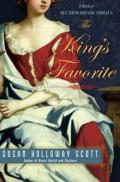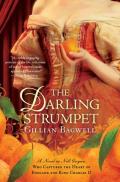


Julia Novak's "Nell Gwyn in Contemporary Romance Novels: Biography and the Dictates of 'Genre Literature'"
examines the generic properties of Diane Haeger’s The Perfect Royal Mistress (2007), Susan Holloway Scott’s The King’s Favorite (2008), and Gillian Bagwell’s The Darling Strumpet (2011).
In view of the remarkable rise of fictionalized biography in the past two decades, it comes as no surprise that several novelists have found Gwyn’s life an attractive subject and thus reaffirmed her status as a cultural icon. The fictionalized biography as such is a fascinating hybrid genre, incorporating biographical fact but presenting it in a fictional mode. The novels under consideration are all the more interesting for their participation in a specific segment of contemporary “women’s fiction”: the historical romance novel. While the facts of Gwyn’s life complicate the novels’ generic plotlines as romance narratives, the romantic elements in turn put pressure on the representation of the biographee’s life, which must make concessions to the demands of the genre. (1)
Novak finds that the novels' affiliation with romance is "signaled by the three book covers, showing images of attractive young women in lavish period dress" and by having "the novels’ titles rendered in ornamental gold lettering" (2). I don't really know enough about covers to be able to assess this assertion, but they don't exactly scream "romance" to me. I tend to expect two people on the cover of a romance, or one person in a state of partial undress.
However, Novak also argues that the texts themselves shape history to fit (at least some of) the expectations of romance:
All three novels capitalize on the features of Gwyn’s life that translate easily into a romance narrative, and they all foreshadow the central love plot early on. In Diane Haeger’s Perfect Royal Mistress (2007), which opens with sixteen-year-old Nell selling oranges in front of the Theatre Royal, the heroine first encounters the king as early as on page 4, noticing that “her knees were suddenly weak” in his presence (Haeger 7). The beginning of Susan Holloway Scott’s The King’s Favorite (2008) features an eleven-year-old Nell with a strong sense of self, who spies the king for the first time on page 6, immediately making him the center of her plans for the future. (4)
In their portayals of Nell herself
Haeger, Holloway Scott, and Bagwell have harnessed Gwyn’s relative popularity for their respective Cinderella stories and shaped their novels’ character constellations accordingly: a likeable heroine with whom readers will easily be able to identify, flanked by two disagreeable aristocratic women. Haeger’s Nell is perhaps the most extreme of the three Nells, willingly taking on responsibility for her drunkard mother and sickly sister, and adopting a black slave girl on top (charitable, caring, and not racist!). These efforts to turn Gwyn into a romantic heroine that readers can “cheer for” may well be the reason for the conspicuous absence from all three novels of the more problematic facts about the historical Nell Gwyn. As with the other two mistresses, her subsistence, and indeed, luxury, was founded on the king’s generosity, and thus, on public money. (6)
Novak also highlights several episodes which have been omitted from all of these novels which might have cast Nell in a much less sympathetic light, including her giving a laxative to a rival and the slitting of Sir John Coventry's nose.
As far as Nell's sexual history is concerned, although "the novels are true to Gwyn’s biography in keeping (most of) her relationships in the story," Novak feels they make "concessions to the romance genre by depicting Nell’s emotional development as directed toward her one true love" (9), Charles II. He, however, is not really romance-hero material: he is a married man and Nell is only one among many sexual partners. All the same,
Haeger’s novel ends on the words: “She may not have been the queen, nor even his only mistress – far from that – but she knew with every fiber of her being, and so did their son, that she had been his only love.” (13)
------
Novak, Julia. "Nell Gwyn in Contemporary Romance Novels: Biography and the Dictates of 'Genre Literature'." Contemporary Women's Writing. Advance Access publication date: June 6, 2014.

I really enjoyed Priya
I really enjoyed Priya Parmar's Nell Gwyn novel Exit the Actress. Prefer it to some of the ones described here.
I haven't read it, or any of
I haven't read it, or any of the three analysed by Novak. The description on Parmar's site makes me wonder if it does some of the same things that these three do: the cover's not wholly dissimilar since it features a clothed woman, Nell "narrowly avoid[s] the life of prostitution to which her sister has already succumbed" and she becomes
That makes me suspect that Novak would say in this book, too, "the romantic elements [...] put pressure on the representation of the biographee’s life, which must make concessions to the demands of the genre."
You've actually read it, though, so I'd be very interested to know what you think.